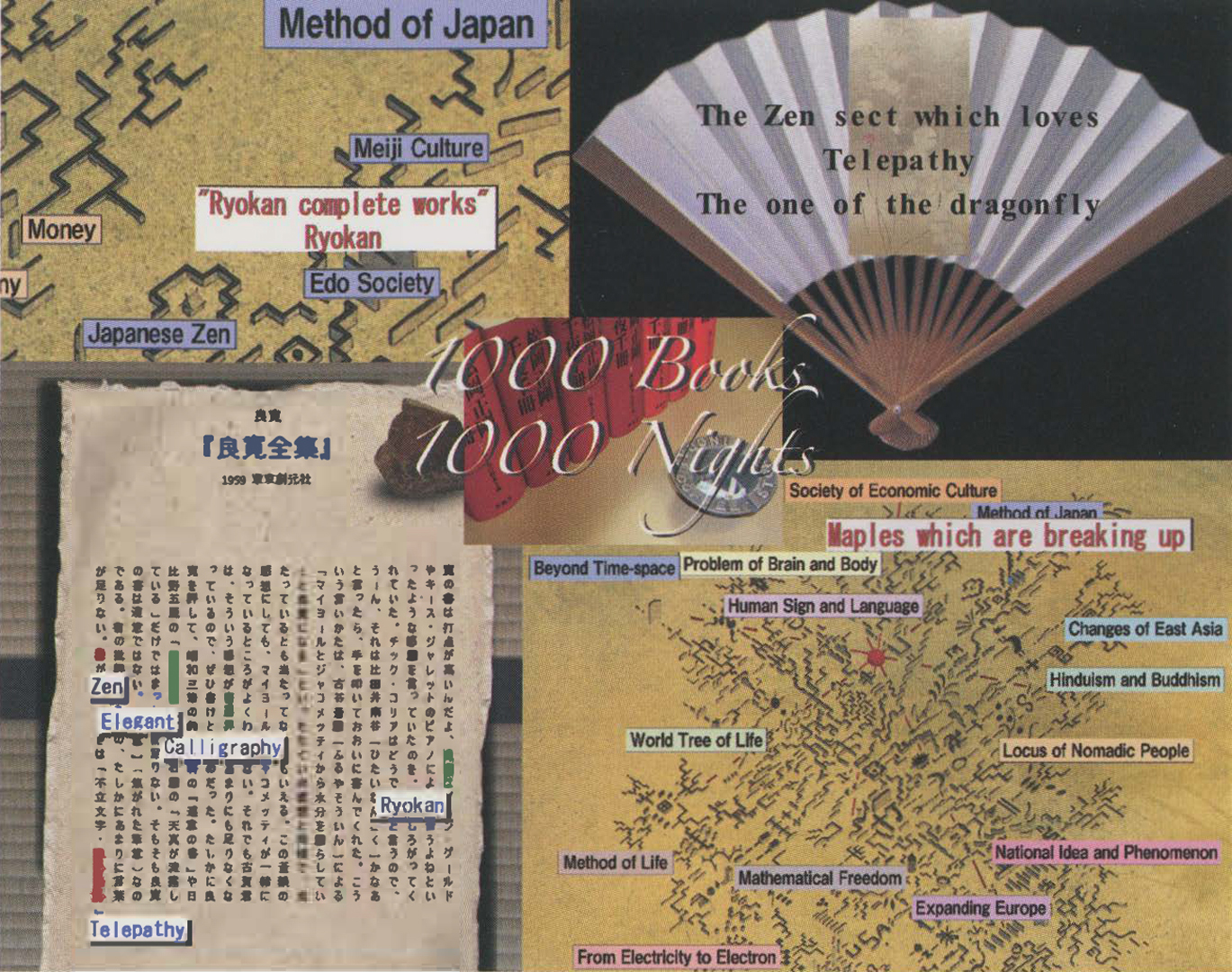Naoko Tosa: Hitch-Haiku
Artist(s):
Collaborators:
- Hideto Obara
-
- Okayama University of Science
- Kazuya Fujioka
- Adrian David Cheok
- Gary Jay Coffman
- Newton Fernando
-
- Nanyang Technological University
- Rohei Nakatsu
Title:
- Hitch-Haiku
Exhibition:
Creation Year:
- 2007
Medium:
- Computer-generated, semi-automatic Haiku program
Category:
Artist Statement:
This example of “cultural computing” condenses the essence of a book into a Haiku, the classical Japanese poetic form of 5-7-5 characters including a seasonal word called “Kigo.” Such imaginative expressions have been applauded by many people. Haiku are stories that generate Context, the shortest stories in the world. “Hitch” means to connect one thing and another thing. In this case, it connects a phrase and another phrase. A user chooses arbitrary phrases from a chapter of a famous Japanese essay called “1,000 Books and 1000 Nights,” by Seigow Matsuoka, and introduces 1,000 books spanning many genres, generations, and origins. The site registers approximately 200 million hits per day! The system generates a Haiku by using the corpus of an essay and several databases dedicated to Haiku generation, then translates it into English. Therefore, the essence of a Japanese book can reach those unfamiliar with the language. Haiku, invented in 17th-century Japan has been recognized as a sophisticated and condensed written form for transmitting sensitive / emotional meaning. It has been expressed in many languages, so it can be a common medium to transfer feelings and bridge the gap of cultural
differences.
Technical Information:
The system carries out a syntaxic analysis for each phrase and detects a basic form of noun or verb. Then it composes a phrase of a haiku by adding a special propositional particle called “Kireji,” which not only separates a Haiku into three phrases but also encourages imagination. There are six types of databases in the system: Haiku thesaurus, Kigo thesaurus, idiom thesaurus, case frame of onomatopoeia, thesaurus, and case frame. From the databases, the system searches for the phrases and words most closely related to user inputs. The system chooses the phrase with the highest score and presumes the season of the Haiku poem from the user inputs or the phrase chosen from the Kigo database. The system translates Japanese Haiku into English Haiku using the automatic translation service, “Language Grid,” at NICT. If users do not like the Haiku generated, they can modify the Haiku and record some new phrases in the system. We assume that the user inputs are closely
related to the phrase modified by the user. The system adds the relationship between the user inputs and the morphemes of the phrase modified, then learns their relativity.
Other Information:
NICT Toshorium—The Navigative City of Books Project
NICT Language Grid





